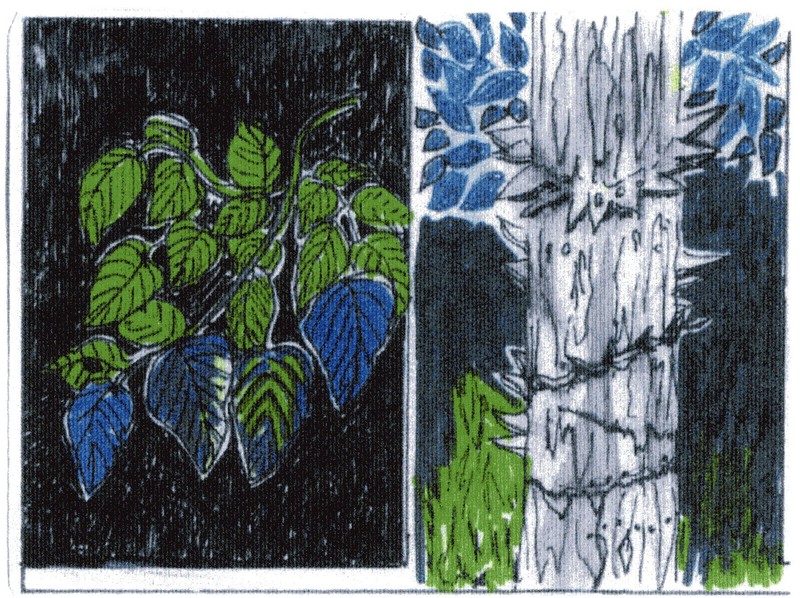Devil’s Walking Stick
Introduction
Text-to-speech Audio
The roots and fruit of the Devil’s walking stick were used by the early settlers as a home remedy to improve blood circulation. Today we know that eating any part of the tree may be hazardous to your health! It usually grows as a straight, branchless trunk with a broad crown of leaves like a palm.
Images
Illustration of a Devil's Walking Stick, by local artist Ann Bittick

Devil's Walking Stick
.jpg)
Devil's Walking Stick
.jpg)
Backstory and Context
Text-to-speech Audio
The Devil’s Walking Stick is also known as an Angelica tree, but is also sometimes mistakenly called a prickly ash or Hercules club, although the Devil's Walking Stick is a distinctly different species with smaller leaves and without the distinctive bumps on the trunk. It typically grows as a set of vertical branchless trunks with broad leaves, often resembling a umbrella, and while not usually tall can grow twice as high in southern climates than in northern ones. The trunk of a Devil's Walking Stick, covered in leaf scars and broken ridges, turns from light to dark brown over time.
Sources
Branches in Time: Notable and Historic Trees of Old Washington Historic State Park. Little Rock, AR. Arkansas State Parks, 2001.
Historic Washington State Park
Historic Washington State Park
Historic Washington State Park
